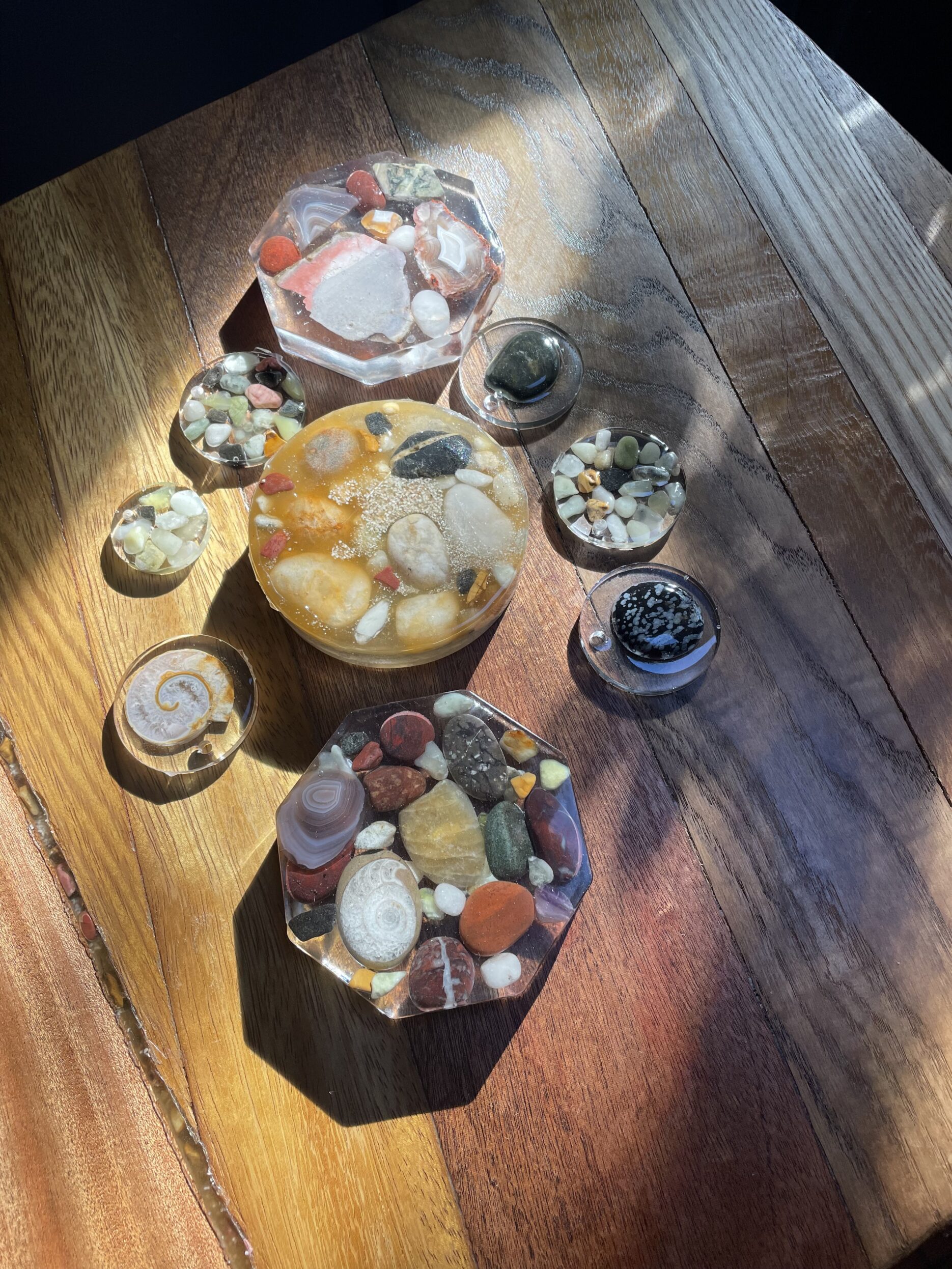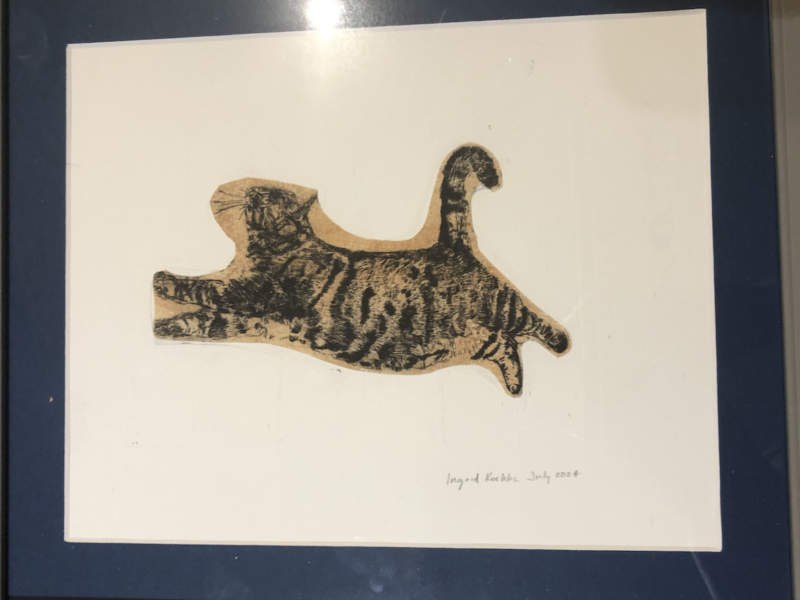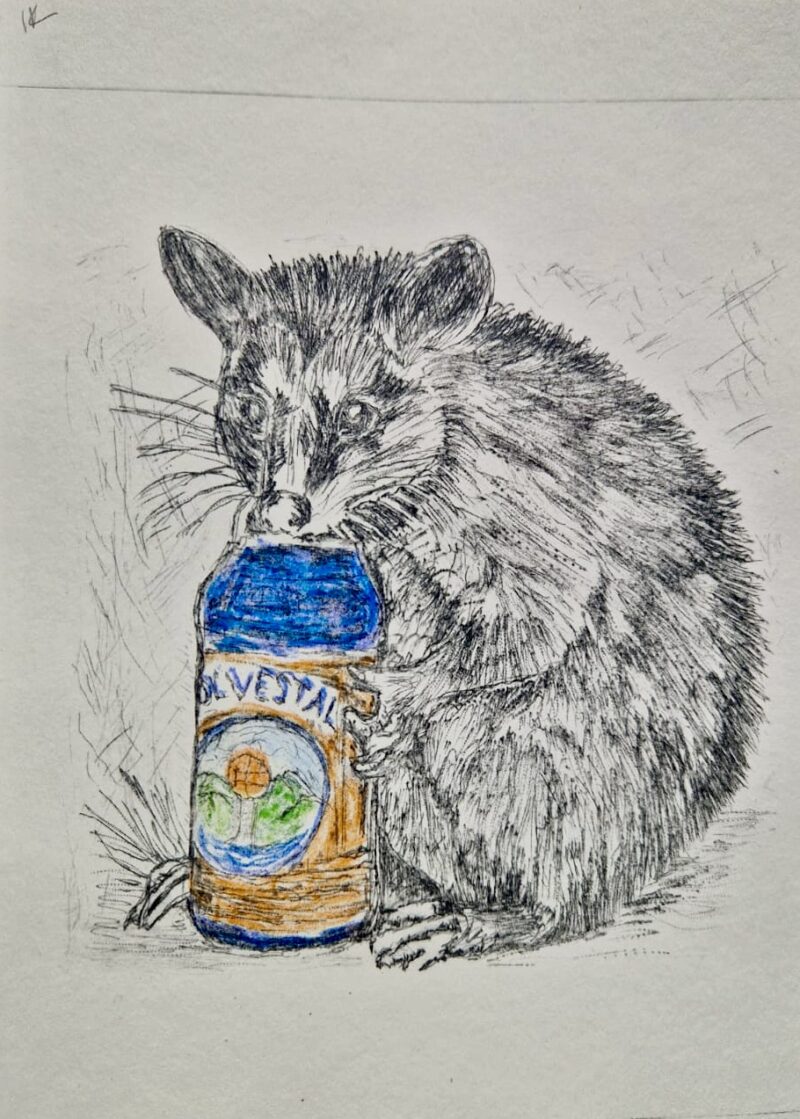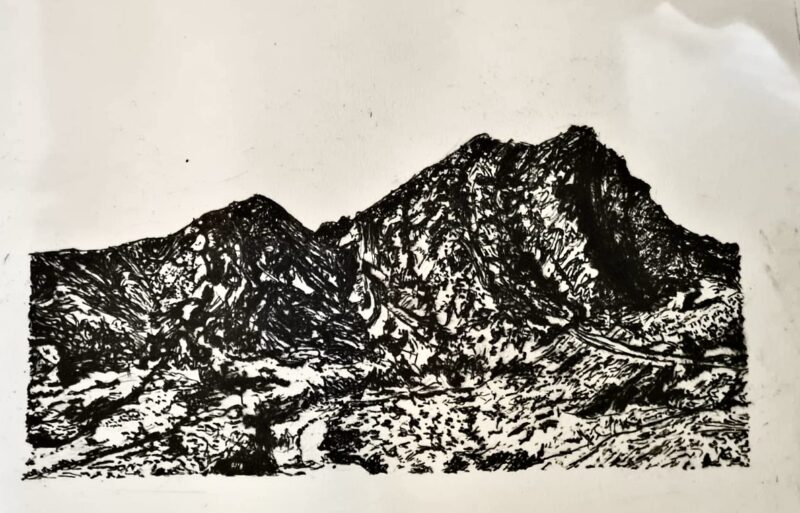The desk of disaster
It started, as so many of my best and worst projects do, with an eBay failure.
I bought what was meant to be a perfectly decent second-hand desk. It turned out to be veneer, not solid wood. The legs were wobbly, and we couldn’t even get it in the car. We had to tear it apart to take it away. Beyond redemption.
Some people might chalk that up to experience and buy another one. I, on the other hand, am prone to compensatory over-engineering.
When a purchase goes wrong, I don’t want to get a new one—I think “I can make one!”. And usually, it spirals from there. (That’s how I ended up spending the better part of 3 years on a quilt, a story for another day.)
What began as “replace the desk” quickly became The Desk Project: a geological block model in wood, a marriage of carpentry, metaphor, and mild mania. I roped in Mark, who is both a palaeontologist and a man of strong opinions about sedimentary order. When I suggested the strata might lie flat, he gave me the same withering look as when I told him I’d found a dinosaur in the lower Palaeozoic* and said, “Oh, Ingrid… flat-lying?”
Reader, there would be no simple stratigraphy.
We designed a slice of a mini mountain belt instead: a tilted basement, a scoured unconformity with a breccia seam, and a jagged thrust fault running through the middle. We built it from reclaimed and offcut planks—different species, tones, and grains arranged like a core sample of memory. Each board tells a story; together, they form a landscape.
Once we’d settled on our tectonic storyline, the real work began.
The unconformity and fault zones are filled with a thin resin seam, embedded with sand and tiny stones. Inspired by those ‘river tables’ I’ve seen online, I tinted the resin – but steered clear of the luminous blue. It’s a subtle mineral sheen. The metamorphic zone was polished with graphite, and the whole column got a thorough coating of worktop oil. Everything else was sanded, sealed, and arranged as though tectonics itself had been through the joinery shop.
How do you build a desk?
Somewhere in the middle of this process, I realised I had no idea how to build a desk. I’ve worked in relief for years—cutting, layering, gluing, making surfaces speak—but joinery was new terrain. So I did what I often do when I need a patient, unflappable co-thinker: I opened ChatGPT.
It walked me through every step, from choosing the right orbital sander to figuring out glue sequencing, clamping pressure, and oil finishes. I’d ask things like, “Can I use handmade paper to reinforce corners?” or “How do you get epoxy resin off quarry tiles?” and it would answer like a calm, mildly amused studio assistant. It didn’t just teach me techniques—it helped me think through how material choices shape meaning. I asked a colleague too, who also gave good advice but who added “Why don’t you just buy a desk?” A reasonable question, but not one I wanted to hear.
Of course, it would have been easier (and cheaper) to buy another second hand desk. But where’s the fun or the opportunity to buy new power tools in that?
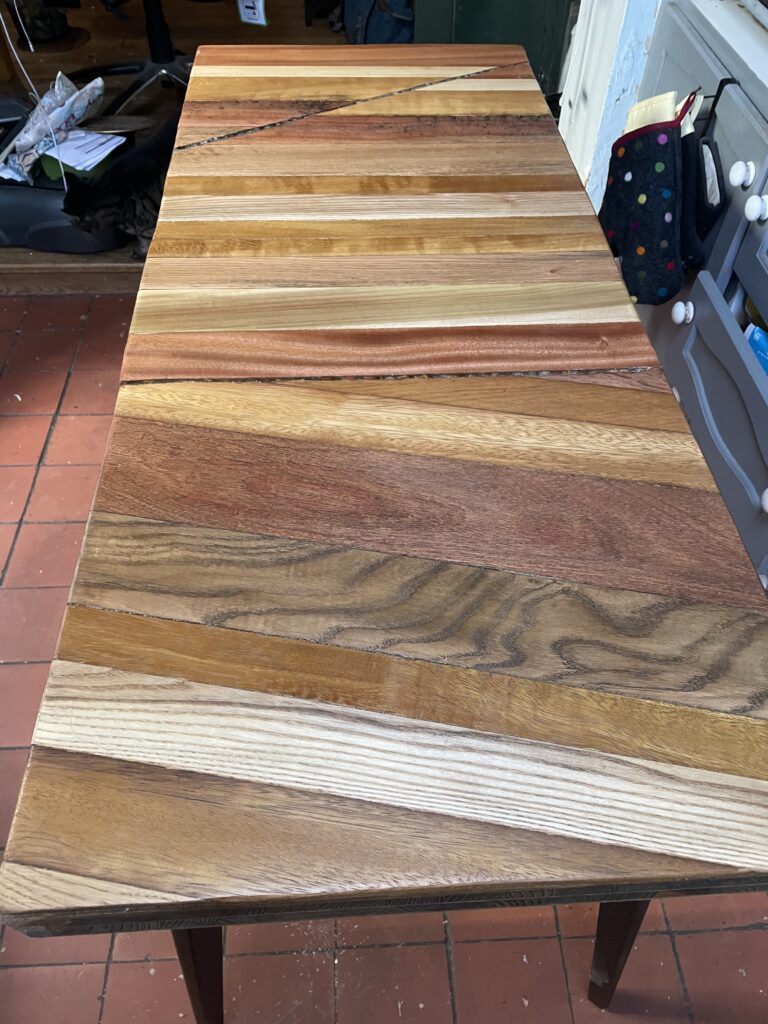
And it’s beautiful. It’s not just a desk—it’s a cross-section of the domestic crust, a collaboration between art, science, and a pair of mildly obsessive people who can turn a simple bit of furniture into a geologically plausible block diagram of love, labour, and shared humour. Every project starts with a fault line somewhere; this one just happened to cut through many layers.
*It was a plastic toy dino – c’mon Mark, a little more faith.
Materials & Methods (selected samples)
- Core: Pine and plywood composite (found by the side of the road)
- Stratigraphy: Mixed hardwood offcuts—oak, tulipwood, sapele, iroko, ash glued to another scavenged plywood board
- Seams: Epoxy resin with mica powders, natural earth pigments, sand, and stone fragments
- Finishes: Graphite and tinted graphite, tinted wood filler, iron staining, Osmo Polyx (Clear Satin)
